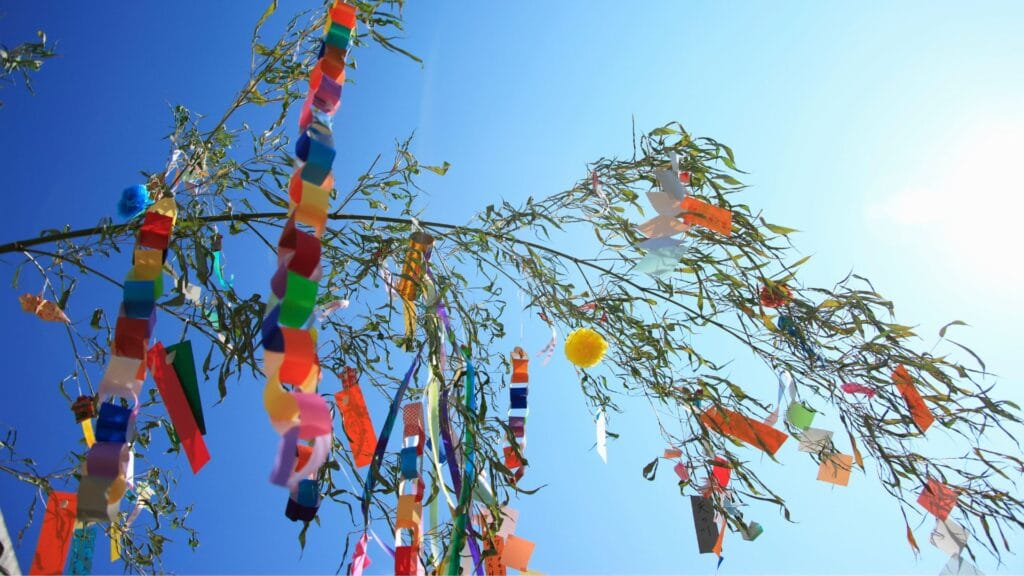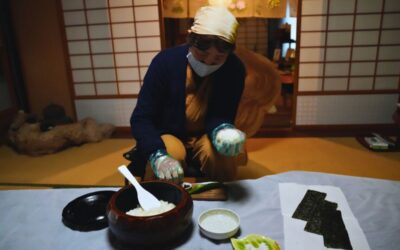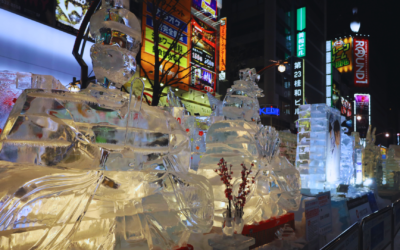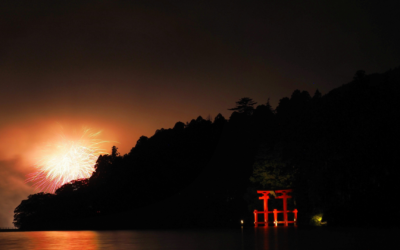7th July marks Tanabata, also known as the Star Festival. It is a Japanese festival where people write their wishes on tanzaku strips and hang them on bamboo branches. The first festivities begin on 7th July, and the celebration is held on various days between July and August. The festival often features decorations inspired by Japanese anime.
What is the meaning and origin of this Tanabata event? Where in the Milky Way are Orihime and Hikoboshi? What kinds of Tanabata decorations are there? Where can you celebrate and attend Tanabata events?
Here, let’s take a look at Tanabata, the origin and history of this festival, Tanabata decorations, ways to celebrate, and different events you don’t want to miss this year!
When is the Tanabata Festival?

The festival used to be held on 7th July of the lunar calendar but is now around early to late August. According to the lunar calendar, based on the movement of the moon, the seventh day is always half a month. The moon sets in the west at around 22:00-23:00 (times may vary slightly depending on the region), so it’s a day when the Milky Way is clearly visible at midnight.
It is said that if it rains, the Milky Way cannot be crossed. Because of that, many people hang teru teru bozu, which literally means “shine shine monk”. A teru teru bozu is a small traditional handmade doll made of white paper or cloth. Japanese people hang them outside their windows to hope for sunny weather. This practice is often depicted in Japanese anime.
Nowadays, according to the new calendar, 7th July is in the middle of the rainy season in much of Japan. On a very rough average, the chance of clear skies is around 30%. However, there are still legends in the Tokai region and Yamaguchi Prefecture, for example, that it is better luck if it rains.
History and Origin of Tanabata

The story of Tanabata is based on ancient Chinese folklore. Orihime and Hikoboshi are, in the Chinese style, Shokujo (weaver) and Kengyu (herdsman). Incidentally, Korea and Vietnam also have Tanabata. In Japanese anime, these characters often make appearances in Tanabata-themed episodes.
In Japan, Tanabata was introduced as a court ceremony in the Nara period (710-794), and the story of Orihime being a skilled weaver led to the custom of wishing for improvement in handicrafts and sewing. This is where the original practice of making wishes to the stars originated.
Later, in the Edo period, Tanabata was regarded as one of the ‘five festivals’ and was an official holiday of the shogunate. It seems that people wrote their wishes on paper strips and wished for improvement in reading and writing at terakoya and other schools.
The word ‘Tanabata’ is written as ‘Tanabata’ because, in Japan, the act of weaving noble cloth used in Shinto rituals was called ‘tanabata’ in ancient times. It seems that the Japanese word ‘tanabata’ was applied to the foreign word originally read as ‘shichiseki’ (there are various other theories).
Legend of Orihime and Hikoboshi
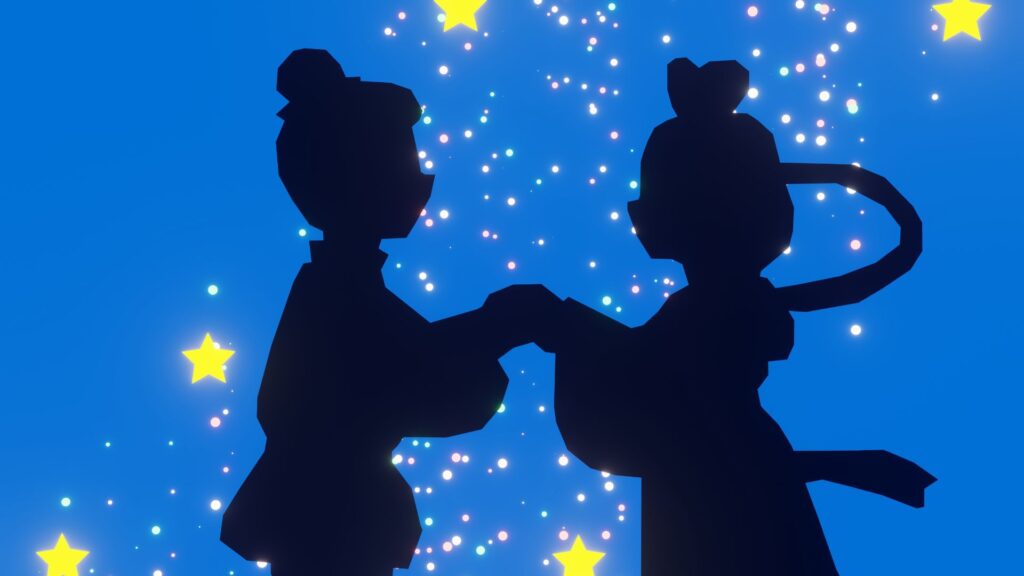
There are many variations in the story of Orihime and Hikoboshi, which have been passed down widely across the country, but the following details are most commonly known. This legend is frequently referenced in Japanese anime, often adding a romantic or fantastical element to the story.
Orihime, the daughter of the Emperor, is a hard-working woman who is a good weaver. The Emperor brings her together with Hikoboshi, who is also a hard worker. They fell in love at first sight and got married. However, the marriage resulted in them playing around and not working. The Emperor, angered, separated them on both banks of the Milky Way, but the weaver wept and was saddened, so he allowed them to meet only once a year, on the night of Tanabata.
The Weaver Star is Vega in the constellation Lyra and the Checker Star is Altair in the constellation Aquila. Both are bright stars of the first magnitude. In Japan, the stars become visible in early July and can be observed until early September. Around the time of the Star Festival, they begin to be visible in the lower eastern sky between 20:00 and 22:00.
With the addition of Deneb in the constellation Cygnus, it is also known as the ‘Great Triangle of Summer’. As it becomes brighter in the season suitable for agriculture, it was thought to be the star responsible for agriculture and sericulture. The easiest time to observe it is in early August, around the time of the Tanabata start of the lunar calendar.
Tanabata Decorations
Meaning of Tanabata decorations
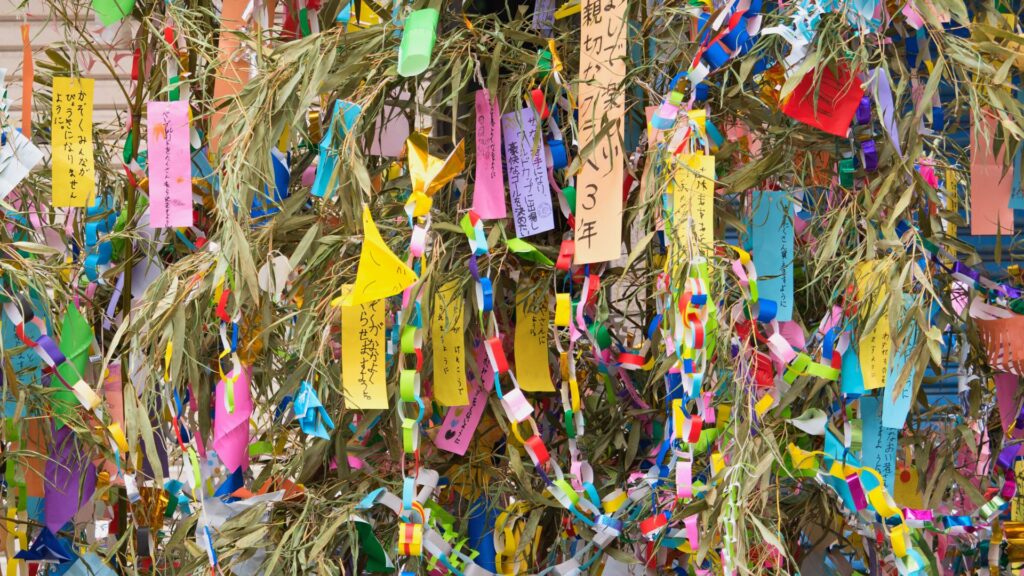
Tanabata decorations are hung on bamboo branches with colourful strips of paper and decorations of various shapes. In the old days, it was believed that the higher the decoration, the higher the wish would reach the stars, so they were hung high up on the roofs. These decorations are often depicted in Japanese anime, bringing a festive atmosphere to the scenes.
There are several types of Tanabata decorations made from origami, and they are called ‘Nanatsukazari’. Each of them has a different meaning.
Blowing Streamers (吹き流し)

These decorations are used to wish for improvement in weaving and sewing. It is a paper representation of the five-coloured threads that were threaded through a long needle and offered in court ceremonies in the past.
Kuzukago (くずかご)

This decoration is used as a symbol of cleanliness and thrift. It is also used to hold paper scraps from the making of Tanabata decorations.
Ami Ornaments (網飾り)

These ornaments are derived from fishing nets. They are used to pray for a big catch of fish.
Paper Cranes (折鶴)

These ornaments are used to wish for family safety and long life. Sometimes made into 1,000 paper cranes. Japanese anime often features scenes of people making paper cranes during Tanabata.
Kinchaku 巾着

Decorated to wish for good luck and savings. Sometimes used as wallets.
Kamiko 紙衣
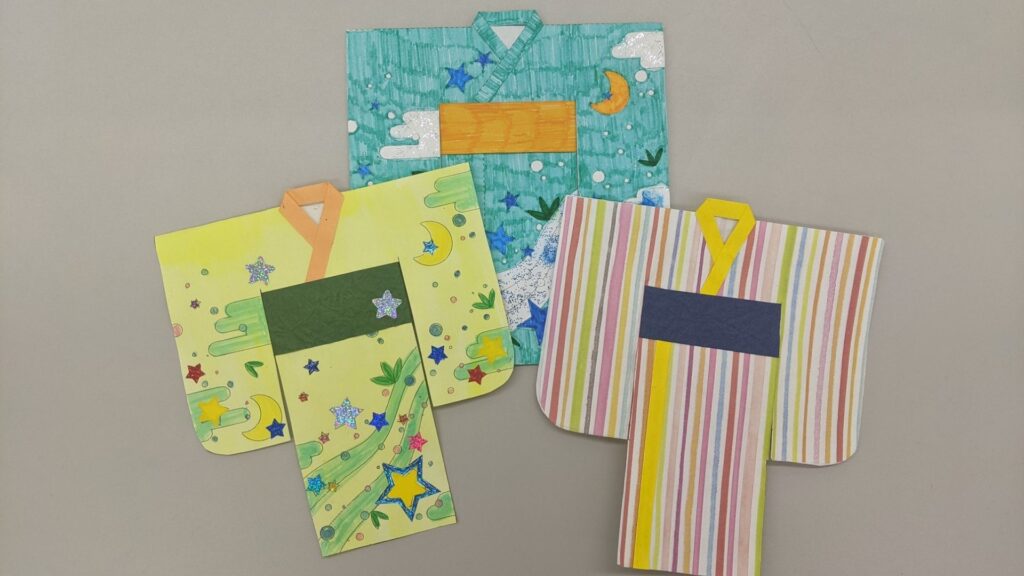
Origami dolls and kimono-shaped objects are made from origami. They are used to wish for improvement in sewing and to take the place of a person who is ill or suffering from a calamity.
Tanzaku 短冊

Five-coloured strips of paper are decorated with wishes written on them. The five colours are red, black (purple), blue, white, and yellow.
Meaning of the Five-Coloured Strips of Paper
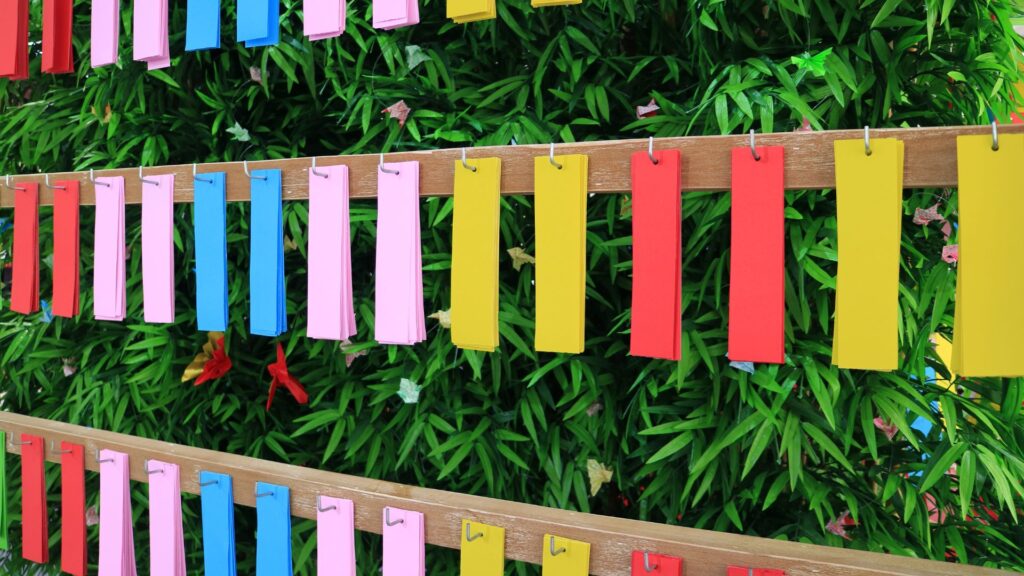
Why are there five colours on tanzaku? The five colours come from the ancient Chinese theory of the five elements, a philosophy of nature. Colours were applied to each of the five elements that were thought to make up all things.
- Fire (flame) = red
- Water = black
- Wood (plants) = blue
- Gold (minerals) = white
- Earth (earth) = yellow
Later, blue came to include green. Purple, a noble colour, was used instead of black. The vibrant colours of tanzaku are often seen in Japanese anime, adding to the festive visuals.
Food to Eat on Tanabata
Many people may not be able to think of any particular Tanabata food, but there are quite a few.
Sakubei (索餅)

Sakubei is a deep-fried snack made from twisted wheat or rice cake flour and was introduced to Japan during the Tang dynasty (618-907). It is still called ‘Muginawa’ in Nara Prefecture and is a familiar name.
Somen

Somen is a gradually evolving version of sōmochi. For example, Sendai City in Miyagi Prefecture still holds the Sendai Tanabata Festival, which has a 400-year tradition, and soumen is still a standard food. Soumen is also available in different colours, so you can create a Tanabata-like atmosphere by making it a ‘five-coloured somen’ in reference to the five-coloured strips of paper. This dish often appears in Japanese anime during summer festival scenes.
Karintou (Fried Dumplings)

Karinto is the closest confectionery to sōmochi. Karinto is said to have its origins in Chinese confectionery or in Spanish confectionery. There is a wide variety of karinto in the Tohoku region. In Akita Prefecture, there are karinto in the shape of strips of paper and fallen leaves, while in Iwate Prefecture, there are spiral-shaped karinto, all with their own unique taste.
Tanabata Events in Tokyo
増上寺 七夕まつり (Zojoji Temple Tanabata Festival)

Tanabata decorations will be set up in the precincts of the temple, and from 1-7 July (9:00-17:00), visitors can write their wishes on strips of paper and tie them to the paper themselves at the ‘wish-writing place’ next to the main hall. The wishes made on the tanzaku will be presented at the Tanabata Prayer Service in the square in front of the main hall from 17:30 on 7th July.
A ‘Tanabata Special Prayer’ will be held on 7th July (three sessions at 18:00, 19:00, and 20:00) at the Angokuden Hall, where a limited number of Tanabata victory charms with a motif of the Milky Way shining in the night sky of Zojoji Temple will be awarded (prayer fee 3,000 yen). A limited number of Tanabata red seals are also given on 7th July.
下町七夕まつり (Shitamachi Tanabata Festival)
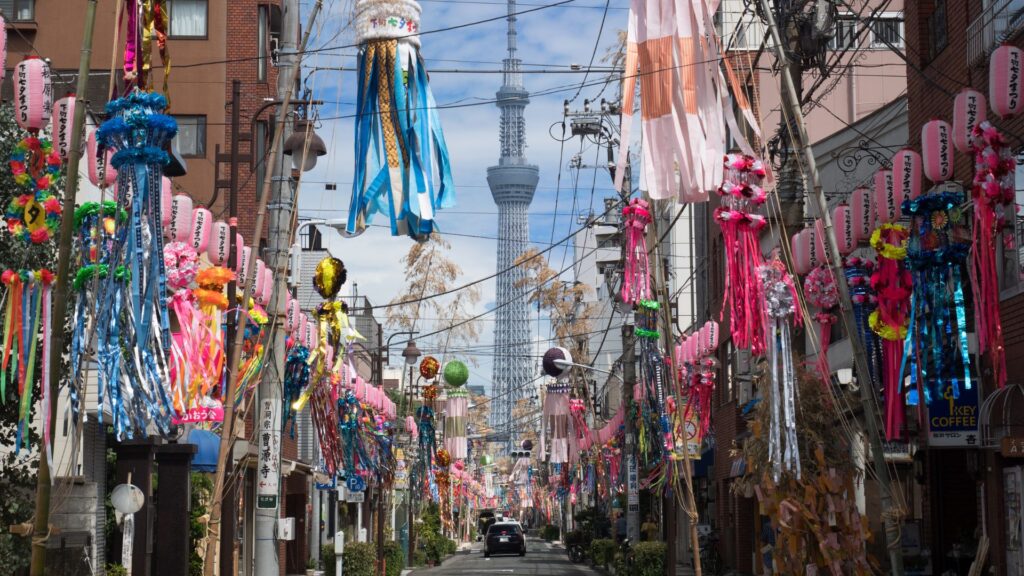
The main event on 6th and 7th July will feature a variety of events, including stalls by local merchants and speciality booths by Taito City’s sister and friendship cities. Following the opening ceremony at 13:00 on 6th July, the Quinstars motorcycle squad from the Metropolitan Police Department, the Colour Guard from the Metropolitan Police Department Music Band, and Harley Davidson bikers will be part of the festivities.
On the second day, 7th, street performances such as Awa Odori, Sado Okesa, and taiko drum performances will be held at various venues. On the second day, the 7th, a ‘Tanabata of Love Fureai Square’ will be held at various venues, where visitors can enjoy a ‘fair-style’ atmosphere with portraits, candy crafts, and picture-story shows.
During the festival period, from 4th to 8th July, visitors can enjoy the Tanabata decorations decorating the streets and write their wishes on strips of paper placed around the streets and hang them on bamboo branches. The venue is a viewpoint of one of Tokyo’s most popular tourist attractions, where you can enjoy a collaboration with the colourful Tanabata decorations, often seen in Japanese anime.
阿佐谷七夕まつり (Asagaya Tanabata Festival)
The shopping street, lined with stalls, is crowded with people every year and is known as the best Tanabata festival in Tokyo. The handmade Haribote decorations, which incorporate each year’s trends and ideas, as well as the Tanabata decorations, are a must-see. Japanese anime often portrays such vibrant and bustling festival scenes.
Tanabata Events in Other Areas of Japan
仙台七夕まつり (Sendai Tanabata Festival)
One of the three major Tanabata festivals in Japan, this major festival attracts more than two million visitors every year. During the festival period, the city centre of Sendai and the surrounding shopping streets are filled with elegant and colourful paper and bamboo Tanabata decorations. The festival’s grandeur is often highlighted in Japanese anime, showcasing the elaborate decorations and festive atmosphere.
能代七夕 天空の不夜城 (Noshiro Tanabata: The Nightless Castle in the Sky)
A castle lantern reportedly operated from the late Edo period to the Meiji period was reconstructed in the summer of 2013 after a century, based on past documents and photographs. The 17.6 m high ‘Karoku’ lantern and the 24.1 m high ‘Aiki’, the tallest castle-shaped lantern in Japan, are paraded through the streets of Noshiro. The sight of these giant lanterns, which seem to reach for the sky, is reminiscent of scenes from Japanese anime.
湘南ひらつか七夕まつり (Shonan Hiratsuka Tanabata Festival)
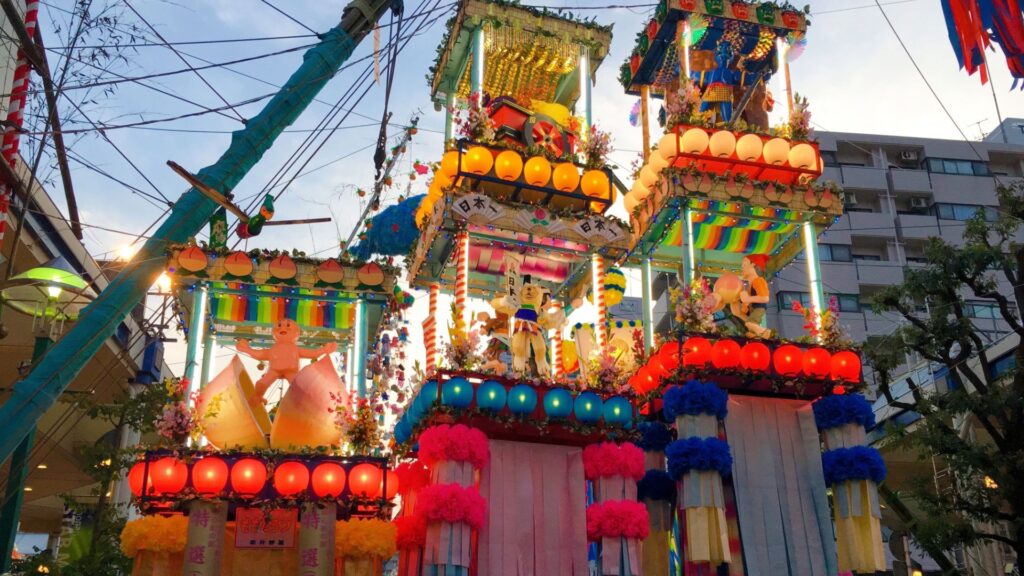
The attraction of the Hiratsuka Tanabata Festival is the gorgeous Tanabata decorations, which can be enjoyed in a variety of sizes (over 10 metres) and in the shape of popular celebrities, animals, and characters. Various events, including a parade, keep visitors entertained. The festival is one of the three largest Tanabata festivals in Japan and one of the three largest Tanabata festivals in the Kanto region. Such grand celebrations are often depicted in Japanese anime, emphasising the vibrant cultural elements.
狭山市入間川七夕まつり (Sayama City Irumagawa Tanabata Festival)

One of the three major Tanabata festivals in the Kanto region, it is a major summer event in Sayama. As well as the colourful Tanabata decorations by local shops and citizens, the ‘Noryo Fireworks Festival’ is also a must-see. The large fireworks and Tanabata decorations that bloom in the night sky create a beautiful summer evening, much like scenes from Japanese anime.
小川町七夕まつり (Ogawa-cho Tanabata Festival)

The Ogawa-cho Tanabata Festival is a highlight of the town’s colourful Tanabata decorations made from washi paper, a speciality of Ogawa-cho. Dancing and a variety of events are held on a grand scale, and on the evening of the first day, a spectacular fireworks display adds colour to the Tanabata night. Such vibrant festivals are often featured in Japanese anime.
茂原七夕まつり (Mobara Tanabata Festival)

A major summer event that attracts more than 800,000 spectators every year. As a traditional event of Mobara City, it attracts many tourists from within and outside the prefecture, as well as local residents. Events such as the ‘Mobara Awa Odori’ and ‘YOSAKOI Naruko Odori’ are also held, and the dancing of the teams, who have practised intensely for this occasion, is a must-see. The lively atmosphere is often depicted in Japanese anime.
安城七夕まつり (Anjo Tanabata Festival)
The Anjo Tanabata Festival attracts more than one million visitors over three days. The streets lined with bamboo decorations made by local residents are spectacular, and visitors are entertained by different themed decorations and events each year. Such grand and colourful events are often seen in Japanese anime.
おりもの感謝祭 一宮七夕まつり (Orimono Thanksgiving Festival Ichinomiya Tanabata Festival)
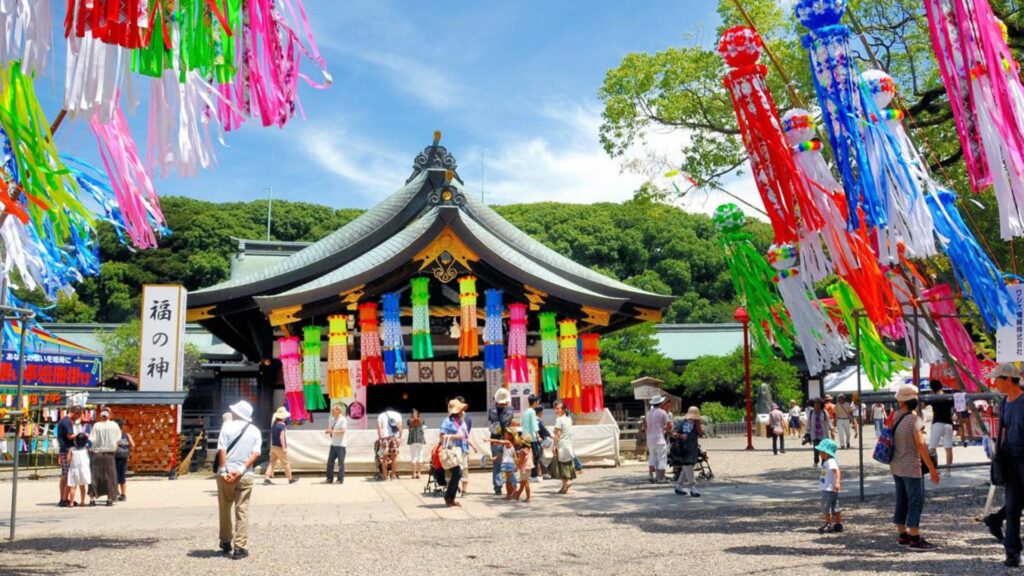
One of the three major Tanabata festivals in Japan, this festival attracts around 1.3 million people every year. In Ichinomiya City, where the textile industry is said to have developed thanks to the blessing of the ‘God of Textiles’, the entire city holds a four-day festival called the ‘Orimono Thanksgiving Festival Ichinomiya Tanabata Festival’ with the last Sunday in July as the finale. The importance of textiles is often highlighted in Japanese anime during Tanabata.
京の七夕 (Tanabata Festival in Kyoto)
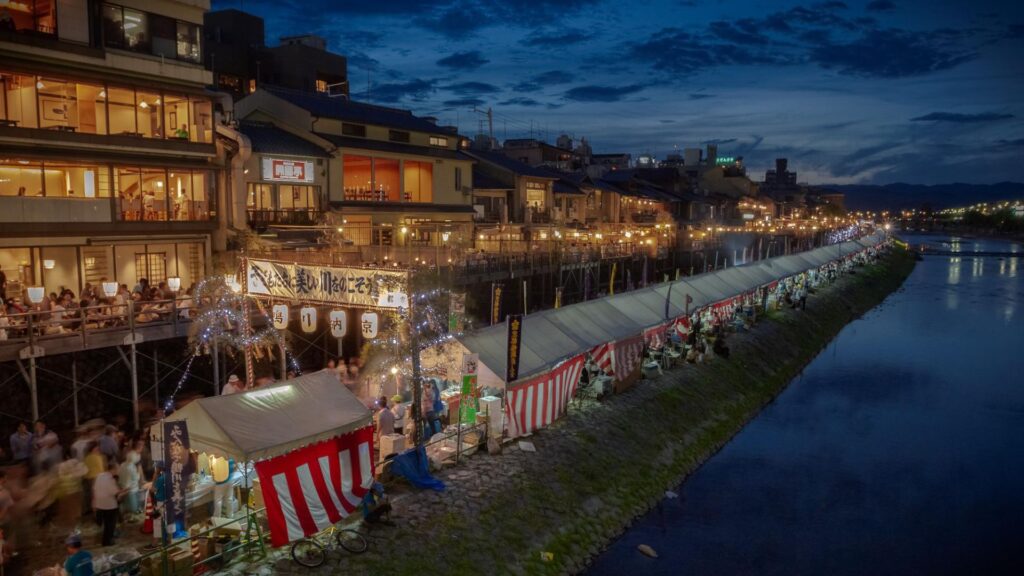
A new summer festival in Kyoto started in 2010. Various events are held at various locations, including the Kamogawa River, Horikawa River, and Nijo Castle venues. Wishes from all over the country are sent to the heavens, and fantastic decorations add colour to the summer nights in Kyoto. Such picturesque settings are often depicted in Japanese anime.
Embracing the Magic of Tanabata
Tanabata offers a unique blend of cultural heritage and celestial romance, making it a festival that captivates people of all ages. The stories of Orihime and Hikoboshi, beautifully illustrated in Japanese anime, bring a sense of wonder and nostalgia, while the vibrant decorations and traditional foods create a festive atmosphere.
Whether it is the intricate origami ornaments, the colourful tanzaku strips bearing heartfelt wishes, or the various regional celebrations, Tanabata is a testament to Japan’s rich cultural tapestry. Participating in Tanabata festivities not only allows you to experience these traditional practices but also to feel connected to the shared hopes and dreams that transcend generations.
Exploring the different Tanabata events across Japan, from the grandeur of the Sendai Tanabata Festival to the picturesque celebrations in Kyoto, provides an excellent opportunity to witness the country’s diverse cultural expressions. Each event, with its unique customs and local flavours, showcases the universal appeal of this festival.
As you enjoy the enchanting decorations, savour the delicious traditional foods, and immerse yourself in the lively atmosphere, you will find that Tanabata is more than just a festival – it is a beautiful celebration of human connection and the enduring magic of dreams.
Want to find more summer magic in Japan? Check out our list of the top 29 summer destinations in Japan.

